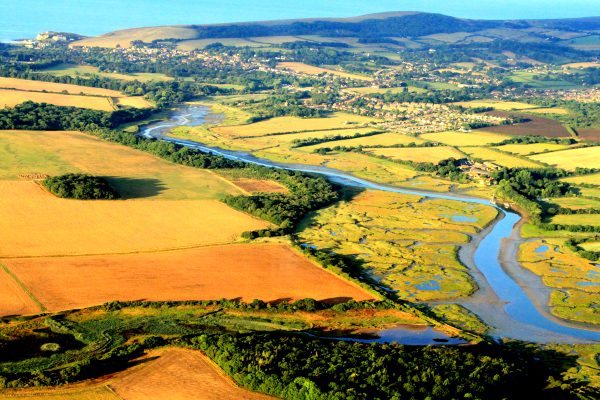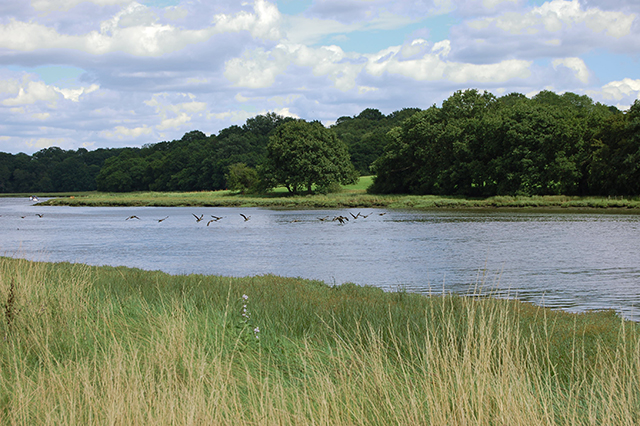Peter Bruce finds peace and tranquility as he meanders up Yarmouth’s pretty waterway
The charming little town of Yarmouth on the Isle of Wight has so many delights that visiting sailors often fail to progress further than the local amenities.
But those with a love of nature and an adventurous spirit will find grand satisfaction above the road bridge at high water by navigating the attractive, unspoilt River Yar, not to be confused with the other River Yar at Bembridge, at the east end of the island.
The Yarmouth harbourmaster has jurisdiction over the river up to the causeway at Freshwater, so it is his office to which any queries should be addressed.
For some reason, the Yar swing bridge, renewed in 1987, blocking the upper river to masted vessels, seems to impose a slight mental as well as a physical barrier.
The reality is that the bridge will open freely nine times a day in the summertime as advertised, though you will have to make a call on Channel 68 if yours is the only vessel.
The bridge opens up the quiet, unspoilt waterway, allowing masted craft of about 2m draught up to the causeway on a good high tide, but doesn’t give much more than 1m depth at neaps.
To find the bridge from the harbour, you have to thread westwards up the channel through the rows of moored vessels, leaving the long pontoon at the north side of the harbour to starboard.
Once through the swing bridge, there is another assortment of pontoons with accompanying moored vessels, as well as a large building on the east side which is the old tide mill, built in 1793.
For keel boats, the only deep anchorage is at the first bend in the river, where the blue racing mark ‘C’ is laid in the summer by the Yarmouth Sailing Club.
Anchoring downriver from here is not allowed due to the pontoons, but is allowed on the bend and above as long as the anchoring vessel does not obstruct the fairway.
Continues below…
Golant, Fowey: a charming anchorage
Ken Endean meanders upriver at Fowey for some proper Cornish hospitality and stunning countryside
How to explore the Minkies under sail
Knowing your tides and their heights is key to conquering the fearsome Plateau des Minquiers, says Ken Endean
Exploring the hidden Hamble
Peter Bruce discovers the rich heritage of the Hamble as he winds his way upriver
The pool has a depth of about 3m at low water though over such a narrow area, a keel boat might need to do a Bahamian moor to reduce the swing.
Neap tides are best for this lovely peaceful anchorage.
Last time we tried to anchor there, two days off springs, a fresh wind blew us a little into shoal water so we retreated downriver and spent the night beside a pontoon, finding 2.2m depth at low water with access to the shore via a swing bridge.
We dutifully went to the local marina office and just caught the duty manager before he closed.
Evidently there’s no discount for being upriver, but we would have needed the swing bridge code for the return had a kind boat owner not already told us.
As the channel becomes progressively narrower and more tortuous upstream, it is best to take a dinghy up with an outboard rather than the boat.
This is especially true if lunch is liable to run on at the Red Lion, the notable watering hole on the west side of the causeway just beyond the church.
The reed-banked river will take you for a mile up to the causeway and the significant building to be seen on the right is the ancient King’s Manor Farm, mentioned in the Domesday Book.
The navigable limit of the river is at the causeway, where you can leave the dinghy and go up the road past the church to the pub.
Wildlife is plentiful on the Yar. You may spot a barn owl hunting by day or, if you’re lucky, the elusive red-billed water rail, though you are more likely to hear its call, often compared to a piglet squealing in distress.
Swallows, Canada geese and kingfishers are a common sight in summer, as are lone little egrets and detachments of black-tailed godwit, silently probing the mud.
In winter, a legion of wildfowl takes up residence on the river – the biggest flock being Brent geese – where they pass the long nights in seclusion and presumably relative comfort.
In summer when the tide is up, Yarmouth Sailing Club races dinghies on Saturdays and Sundays, but the blissfully quiet Yar is generally little used, and most of the time you will find yourself sharing it with only the wildfowl and waders.







